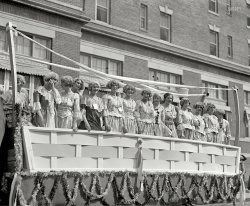
MAY CONTAIN NUTS

Search Shorpy
SHORPY ART

Framed or unframed, desk size to sofa size, printed by us in Arizona and Alabama since 2007. Explore now.
Join and Share
Ad-Free Shorpy
Shorpy is funded by you. Patreon contributors get an ad-free experience.
Learn more.

Recent comments
- Details, Details
- What's that building to the left of the tower?
- Coal Barges
- Bromo-Seltzer
- Inner harbor
- The Basin
- What a headache!
- Giant stepladder?
- Baldwin 62303
- Baldwin VO-1000
- Cold
- No expense spared
- Tough Guys
- Lost in Toyland
- And without gloves
- If I were a blindfolded time traveler
- Smoke Consumer Also Cooks
- Oh that stove!
- Possibly still there?
- What?!?
- $100 Reward
- Freeze Frame
- Texas Flyer wanted
- Just a Year Too Soon
- WWII -- Replacing men with women at the railroad crossing.
- Yes, Icing
- You kids drive me nuts!
- NOT An Easy Job
- I wonder
- Just add window boxes
Member Photos
The Shorpy
Print Emporium
Print Emporium
Search Shorpy
Search results -- 30 results per page
- On the Street Where You Live: 1900
- ... platted and developed, to get an idea of the age of the trees. Elms, besides having wonderful canopies, also are fast growers.
... Posted by Dave - 08/15/2012 - 2:39pm -
![On the Street Where You Live: 1900 Detroit, Michigan, circa 1900. "W.H. Jackson residence." Just out of view across 2nd Avenue in this two-part panorama was the residence of Detroit Publishing photographer William Henry Jackson. 8x10 inch glass negative. View full size.
PhotomergeJust thought I'd run both of these through Photoshop's Photomerge command and see what the resulting panorama would look like.
[I tried the same thing (click below to enlarge). A passable result with a couple of obvious flaws -- the cable running across the street, instead of meeting in the middle, diverges at two very different angles, and the curbs on the left side of the street don't line up. Your version (bottom pic) turned out better, curbwise. UPDATE: I took another stab at it and came up with something a tad more Euclidean. Click to embiggen. - Dave]
Cass Park in the backgroundI think this picture is a view of 2nd Avenue heading away from downtown where it runs into Cass Park. I don't think any of these buildings still stand. And the park's fountain is sadly no more.
Nice rackFor bikes!
Fast ShadeAny idea of the address? I'd like to find out when this neighborhood was platted and developed, to get an idea of the age of the trees. Elms, besides having wonderful canopies, also are fast growers.
[Building on the left is the Marlborough apartments at 419-421 Second Avenue. (Addresses have been renumbered since this photo was made.) At the end of the street we can see the fountain in Cass Park. - Dave]
LocationThis looks like the street, from a 1895 Detroit street map.
(The Gallery, Detroit Photos, DPC, W.H. Jackson)](https://www.shorpy.com/files/images/4a20020a.thumbnail.jpg)
- Han Wah Laundry: 1901
- ... View full size.
Tree wrap it looks like the trees are wrapped in chain link fencing.
Can anyone explain?
[Curbed ... Posted by Dave - 10/08/2020 - 2:15pm -
![Han Wah Laundry: 1901 Washington, D.C., circa 1901. "View of Sixth Street N.W., west side, looking north from I Street." 5x7 inch glass negative, D.C. Street Survey Collection. View full size.
Tree wrapit looks like the trees are wrapped in chain link fencing.
Can anyone explain?
[Curbed horses tend to nibble. - Dave]
News ItemThe Washington Post -- Aug. 14, 1903
Han Wah Moy's Clothes Gone
Han Wah Moy, who conducts a laundry at 900 Sixth street northwest, failed to secure the door properly Wednesday night when he retired, and some one entered, carrying off the celestial's garments and a $5 bill which was in one of his pockets. Moy discovered the loss yesterday morning and, coming to police headquarters in borrowed clothes, reported the theft.
Still Going Strong!!This may be the first time that the D.C. Street Survey buildings shown are still here.
Re: News ItemFor a moment I thought stanton_square was back. (Note to new Shorpsters: this informative commenter, not seen for a few years now, provided relevant news items contemporaneous with the posted photo, in a distinctive format very similar to Dave’s comment.) I wonder where he / she got to.
Future shockThere are signs and portents here of the Han Wah Laundry's future: a disembodied foot and the faint ghostly images of passers-by; the blurred image of the woman hurrying away with a baby buggy; the abandoned bicycle; the shadow pattern on the pavement that calls to mind a devilish face. A century later the quieter pace of a quieter age is gone.
Bike & Camera CaseIs that our photographer's bike and camera case in the lower right corner of the image? I would suspect a tripod was also involved unless the camera was supported by some physical object like a wall etc.
[The case is for the photographer's glass negatives. - Dave]
(The Gallery, Bicycles, D.C., D.C. Street Survey, Stores & Markets)](https://www.shorpy.com/files/images/SHORPY-40305a.thumbnail.jpg)
- The Boys of Summer: 1949
- ... I still have the diagram he made, triangulating from trees on the slope, but it never seemed to help much. If I ever write my ... Posted by tterrace - 02/11/2012 - 6:28pm -
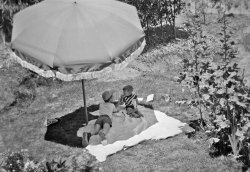
- Truck Parade: 1919
- ... top of the Atlantic Coast Lines building can be seen over trees in the 1919 view and is the light/dark orange building in the 2010 view. ... Posted by Dave - 07/17/2012 - 10:29pm -
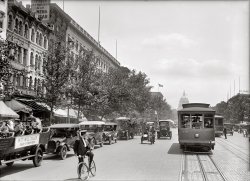
- Be a Tree: 1910
- ... a lot of "Balls" wearing that outfit. Don't they have real trees in New Zealand?
Could be Lady Gaga in another life. Heaven help us ... Posted by Dave - 11/30/2013 - 5:43pm -
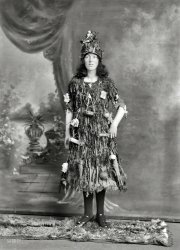
- A Fast Horse: 1914
- ... and rider and the focal plane shutter effect caused the trees and monument to appear to be leaning.
Edit:
Examining the image ... focal plane distortion in addition to the monument and trees...
It appears to me that the horse looks like it not as long as a ... Posted by Dave - 09/29/2013 - 12:15am -
![A Fast Horse: 1914 Washington, D.C., 1914. "Wrisley Brown, attorney, riding." You'll note the Washington Monument showing a decided tilt to the left, although the reason is more optical than political. Harris & Ewing glass negative. View full size.
Vertically Moving Focal Plane ShutterThe photographer panned the camera.
This is a single curtain focal plane shutter which uses a long black cloth with horizontal slits of different width pre-cut. It runs vertically close to the negative between two sets of rollers. It is spring driven and winding up the spring motor also rolls the shutter curtain back to the feed roller.
When the shutter is released the slit travels in front of the film. The faster the "shutter speed", the narrower the selected slit is because the shutter curtain travels at the same speed (inches per second or some other measurement) for a range of shutter speeds so that "shutter speed" ends up being the amount of time any given part of the negative is exposed to light. If I have this right, the slit was traveling top-to-bottom relative to the photographer. The negative image is being projected upside down inside the camera so it is "seeing" the light start at the bottom of the image and moving up.
In the old racing car photos you might see slanted oval tires (camera relatively motionless) or slanted posts and poles in the background (camera panning).
Focal Plane Shutter distortionIt appears that the photographer was panning the camera to follow the horse and rider and the focal plane shutter effect caused the trees and monument to appear to be leaning.
Edit:
Examining the image further I think I see some additional focal plane distortion in addition to the monument and trees...
It appears to me that the horse looks like it not as long as a regular horse and the rider appears to be too big for the horse. Maybe it is just my eyes playing optical tricks on me.
Heels down, Wrisley!Elbows in!
Amazing Timing!Obviously, in 1914, stop-action photography was a long way off; yet somehow, the photographer managed to get this shot of the horse with all four of his hooves off the ground at the same time.
[Eadweard Muybridge first accomplished this 36 years earlier in 1878. -tterrace]
Thank You! tterrace - I stand corrected. The old adage about learning something new every day just hit me in the head like a V8 commercial.
(The Gallery, D.C., Harris + Ewing, Horses)](https://www.shorpy.com/files/images/SHORPY_03742a1.thumbnail.jpg)
- Stonestep: 1925
- ... It is a nice neighborhood, with the sun shining and the trees, providing a welcome shade. You can almost hear the kids breaking the ... Posted by Dave - 08/07/2012 - 12:42pm -
![Stonestep: 1925 Washington, D.C., circa 1925. "Mrs. B.L. O'Leary house." The 2009 F Street N.W. residence of one Mrs. Bessie Lawton O'Leary, born Bessie Stanton Lawton, mother of Edwin Lawton O'Leary. The sign by the door reads "Stonestep -- Rooms, Meals." National Photo Company Collection glass negative. View full size.
Quiet ZoneView Larger Map
How inviting!What a peaceful, charming neighborhood. How I'd love to step off the streetcar, go up the steps and get a room (with meals by Mrs. O'Leary!). I wonder if boarders had access to that lovely balcony or the bow window below.
Old Screen DoorIt is a nice neighborhood, with the sun shining and the trees, providing a welcome shade. You can almost hear the kids breaking the silence as they charge out of 2007 with a push on the old screen door and the spring groaning back in resistance. There also looks to be lower flats, what I knew as Polish flats growing up in Milwaukee.
[2007, like 2009, was a boardinghouse in the 1920s. It was owned for a time by a couple whose young son, a lawyer, drowned in a canoeing accident. - Dave]
$1 Chicken Dinner
Where to Dine
THE STONESTEP
2009 F St. N.W.
Special Chicken Dinner
Served 1:30 to 2:30, $1.
Advertisement, Washington Post, May 17, 1925
SpecialFor a dollar, that word "special" worries me.
GWU campusThis is along what's now the southern boundary of George Washington University. There are lots of dorms around and many of the apartments are occupied by students. I recently graduated from GW and often wondered what the area was like before the school consumed it.
(The Gallery, D.C., Natl Photo, Streetcars)](https://www.shorpy.com/files/images/31763u.thumbnail.jpg)
- A Higher Power: 1937
- ... which was still under construction then. All of the trees are grown tall now; most of the gravestones are under leafy shade. ... Posted by Dave - 05/01/2019 - 1:03pm -
![A Higher Power: 1937 March 2, 1937. New York City. "St. Paul's chapel and churchyard, Broadway and Fulton streets." Overshadowed by two proto-skyscrapers from the 1890s, the Park Row and St. Paul buildings. Photo by Arnold Moses for the Historic American Buildings Survey. View full size.
3:11 PMIt's odd to see a church tower with a clock. Clocks are more often seen on banks or government buildings.
My very first thought on this imageIf I lived in the building on the back left, I really would have loved to have a friend in the opposite building so I could walk back and forth across those steel beams each day to hang out. Other than that, it's an amazing photo.
Time and Time againSt. Paul's and Trinity, just down the street at the head of Wall Street, both have clocks. The clock at St. Paul's was stopped by the dust of 9/11. (same parish).
The one in Trinity's tower was used to signal the start of the New Year. Before Times Square, people would gather at Trinity on New Year's Eve and celebrate when the clock struck midnight.
Matter of perceptive (pun intended)Even meets the traditional city ordinance that no profane building shall be higher than the church spire.
Still haunting meI had the privilege of visiting and photographing this cemetery in 2011. It's across the street from Ground Zero and the new World Trade Center, which was still under construction then. All of the trees are grown tall now; most of the gravestones are under leafy shade. Nothing was harmed in the terrorist attacks, and they used the church building as a place of refuge and refreshment for the first responders. There's a pew where George Washington worshiped ... back in the day.
WOW!Love the new look!
[Thanks. It is a work in progress! - Dave]
BackwardsYou are looking at the front of the chapel. While you now enter on Broadway, the front is shown here - the altar is on the Broadway side. Most people think the Broadway side is the front.
The archivist for Trinity/St Paul's theorizes that after his inauguration, Washington who famously worshiped here, traveled from Wall Street where he was sworn in, to St. P's by boat - as it was faster.
At the time, the graveyard was on a gently sloping hill that lead led to the Hudson River.
I was in there the Sunday after 9/11. It was dusty, but there wasn't a crystal off the chandelier, or a crack in the ceiling. The only loss was a single tree, an insignificant sycamore, and not a very old one at that.
Barnum's American Museum was once across the street. When it burned for the last time, he put the show on the road, and under the big top.
(The Gallery, HABS, NYC)](https://www.shorpy.com/files/images/SHORPY-119362pu.thumbnail.jpg)
- Bacon's Attic: 1936
- ... it was built in the 1600's, the wood was probably from trees planted in that century or even in the 1500's, and the bricks would also ... Posted by Dave - 05/07/2016 - 12:47am -
![Bacon's Attic: 1936 1936. "Bacon's Castle, James River vicinity, Surry County, Virginia. Built by Arthur Allen circa 1660. Seized and fortified during Bacon's Rebellion in 1676." 8x10 inch acetate negative by Frances Benjamin Johnston. View full size.
Hello, hornets!I imagine Frances snapped this picture and then beat a hasty retreat.
Ancient wood and bricksBecause it was built in the 1600's, the wood was probably from trees planted in that century or even in the 1500's, and the bricks would also have to have been manufactured around that time. That would make those materials almost 400 years old when photographed. My house was built in 1965 and I'll be lucky if it lasts as long as I do. Even just maintaining it never ends.
Now, fit for storage.Wasp-free and tidy!
Not sure about the hornets, but......there are quite a few dirt-dauber [mud-dauber] nests amongst the rafters.
Ehh ... they're friendly@Lost World: Those look like dirt-dauber nests. IME they're quite docile and easy to co-exist with. I'd be lots more freaked out if they were yellowjacket nests. Those boogers are MEEEEEEEEEEEEEEAN.
Wasp ResidenceLots of what my Dad calls Muddaubers Wasp nests in there. We had a lot of them in our barn. They never really bothered you if you left them alone.
(The Gallery, F.B. Johnston)](https://www.shorpy.com/files/images/SHORPY-05637a1.thumbnail.jpg)
- Interurban: 1921
- ... Even if it is a bit close to the road.
Trolley The trees look about the same, but the tracks and house are gone, as well as the ... Posted by Dave - 09/11/2011 - 2:00pm -
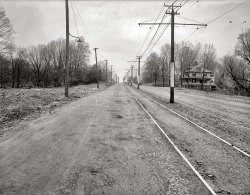
- Lower Wider Smarter: 1946
- ... Water Note the faux-seashore complete with sand, palm trees and beach umbrella.
End of an era Although Packard introduced the ... Posted by Dave - 06/09/2016 - 1:39pm -
![Lower Wider Smarter: 1946 September 12, 1946. Washington, D.C. "Showroom at Superior Motors. Client: Griffith-Consumers Co." Step into the FUTURE today with the Packard Clipper! 8x10 acetate negative by Theodor Horydczak. View full size.
Just Add WaterNote the faux-seashore complete with sand, palm trees and beach umbrella.
End of an eraAlthough Packard introduced the Clipper in 1941, 1946 was the first model year that saw total abandonment of the classy vertical louvered grille that had distinguished most Packards starting with 1933, and even earlier on some models. Once Clipper-type styling got perfected with the Custom line in 1950, that also got abandoned. And it was downhill from that point on. Already joined with Studebaker, the last authentic Packard was built in June 1956. The marque that was once among the top rated "3 Ps" (Packard, Peerless and Pierce-Arrow) amounted to little more than rebadged Studebakers for the next two years. Then, nothing.
Happy days are here again!I turned 7 on that very day. The war was over, soldiers were returning home, no more food rationing, families and lovers were reuniting, prosperity was booming and America had emerged victorious. I wish the spirit of that exhilarating, invigorating and revitalizing era could have been permanent. If I could keep time in a bottle, that would fill one of my treasured bottles. Life was good.
[Unless you were dead. -Dave]
Some future!A decent car, the Packard Clipper, though far from the marque's pre-war standards of luxury. The body is a pre-war holdover, and mechanically the small straight-8 engine, though smooth and reliable, was hardly a harbinger of things to come either.
Except for the new brands -- Kaiser, Frazer, the token production of Tucker -- it was 1947 before any radically new coachwork was being produced by a major manufacturer: Studebaker, followed a year later by Hudson and then Nash. Obviously the majors, having a heavy investment in their 1941-42 body dies and facing a seller's market after the war, held on the longest, badge-engineered pre-war cars until 1948 and '49.
Though there was much reason for euphoria after the war, rationing did not end immediately upon V-J day, though by late '46 I suspect it had. I recall being punished by my father, recently returned from the Pacific, for ruining a rationed item by attempting to blow away a cigarette ash he'd dropped on the tablecloth. (Yes, smoking and eating were complementary activities in the winter of 1945-46). Instead, I blew the whole tray's worth of Chesterfield ashes onto a stick of still-rationed butter.
Our relationship went downhill from there.
Just a bit early for Father's Day The war was over. Rationing was slowly fading away. My grandmother was pushed off of her wartime job working on airplane engines so that returning servicemen, and Packard, could get back to the business of building cars.
But my dad was there in the big plant on East Grand Boulevard, working his way through college on the night shift, with a locker full of books to study on his breaks. Still to this day, at the age of 90, every time he sees an old Packard or Hudson (another plant where my father worked in those years) he says "I think I built that one".
(The Gallery, Cars, Trucks, Buses, D.C., Theodor Horydczak)](https://www.shorpy.com/files/images/SHORPY-5a43758u.thumbnail.jpg)
- The Pecans of Wrath: 1911
- ... through the Florida State campus was lined with pecan trees. During harvest time there were lots and lots of pecans for hungry ... Posted by Dave - 12/13/2017 - 6:56am -
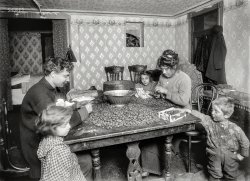
- Emerson and Orme: 1926
- ... and M -- the corner is visible in this photo through the trees on the left.
Odd Fellows make Good Neighbors Building in the ... Posted by Dave - 09/13/2011 - 12:03pm -
![Emerson and Orme: 1926 Washington, D.C., circa 1926. "Buick Motor Co. Emerson & Orme garage, M Street." National Photo Company Collection glass negative. View full size.
Intakes & ExhaustsI love the juxtaposition of the upright commercial brick buildings and sagging old wooden houses. Only the building at the far left (located on the S.W. corner of 16th and M) survives today.
Washington Post, Feb 13, 1924
Intakes & Exhausts
By Si Grogan
...
Today, Emerson & Orme, retail Buick dealers, celebrates their fourteenth business anniversary. Starting in a small way this firm, composed of James Orme and Bruce Emerson, opened a salesroom and service station at 1407 H street. They were one of the original electric car dealers in the city, handling electric commercial as well as passenger cars. As the day of the electric car began to wane, due to the simplification of the gasoline vehicles and its wider range of operation, they added a gas car to their line. Outgrowing their H street quarters, they moved to the present location on M street between Sixteenth and Seventeenth, where they occupy a three-story building built to suit their needs. Shortly after moving to their present quarters they took a Buick retail car franchise and during the past few years in a the car sales department have devoted their attention to the sale of this car. Their garage which houses the machines of many of Washington's famous people is one of the most complete and best known in this section of the country.
1620 M Street NW to-dayView Larger Map
Not big players in the art scene, apparentlyThere is a certain charm to the stark billboard and occasional Buick sign being the only cues to what the building is. I have an idealized image of the past, where car dealerships and garages looked more like the one in this 1920 postcard:
Can anybody identify the markings near the top of the building? I assume they represent the original owner, although I cannot identify them.
[Emerson & Orme seem to have been the original owners. - Dave]
E&OEmerson & Orme, Washington, D.C., agents for the Detroit electric, have commenced the erection of a two-story fireproof building to contain salesrooms, service station and garage. It is located on M Street, between 16th and 17th Streets, and will have a frontage and depth of 135 ft. On the first floor there will be a salesroom, 19 by 54 ft., for new cars and a salesroom 19 by 54ft., for second-hand cars. Offices and a waiting room will be located on the main floor, together with a large garage. The charging plant will be located on the second floor. Provision has been made for a 3rd story at some future time. The building will be completed in January. -- Automotive Industries, 1919
National GeographicNational Geographic Society headquarters now occupies the entire block with two modern buildings. The Society's original building, Hubbard Hall, still stands at the corner of 16th and M -- the corner is visible in this photo through the trees on the left.
Odd Fellows make Good NeighborsBuilding in the background with the funny dome is an Odd Fellows Hall at 1604-1606 M St NW.
(The Gallery, Cars, Trucks, Buses, D.C., Natl Photo)](https://www.shorpy.com/files/images/32332u.thumbnail.jpg)
- My Ears Are Burning: 1940
- ... jars that are already done? Are there that many apricot trees in NM?
Roast 'n ears My father (1898-1958) called them.
... Posted by Dave - 11/25/2020 - 4:33pm -
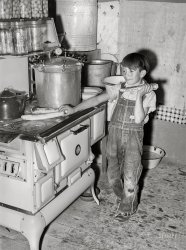
- Waitin' Phaeton: 1928
- ... from the corner of Laguna and Clay Streets. Through the trees are the 2085 and 2101 Sacramento St. apartment houses (which are still ... Posted by Dave - 09/27/2016 - 11:53pm -
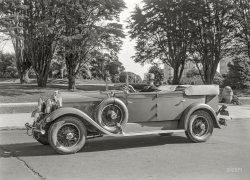
- Keep Off the Grass: 1904
- ...
+108 Below is the same view from April of 2012 (the trees which used to line the plaza were destroyed in a snowstorm in October of ... Posted by Dave - 07/19/2012 - 10:21pm -
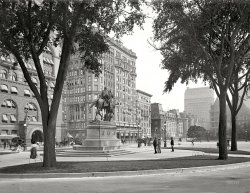
- Palm Meadow: 1940
- ... Palmetto A play on words?
Sad palms Those palm trees don't look too happy or healthy. Not like Florida or California palms!
... Posted by Dave - 07/15/2021 - 11:59am -
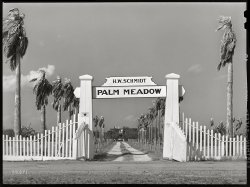
- Let's Eat: 1939
- ... (potluck) Sunday dinner on picnic tables under the trees behind or to the side of the church (and possibly next to the cemetery), ... Posted by Dave - 09/09/2011 - 11:35am -
![Let's Eat: 1939 July 1939. "Congregation gathers after services to talk. Wheeley's [Wheeler's?] Church, Person County, North Carolina." View full size. Medium-format nitrate negative by Dorothea Lange for the Farm Security Administration.
Older than the USAAmazing, the history one uncovers because of Shorpy.
Searching the internet finds that Wheeler's Church is in the Bushy Fork township of Person County and has one of the two cemeteries in the township. More interestingly (to me) was this article that claims the "Wheeler's Primitive Church" was founded in 1760, before the Revolutionary War.
I wonder if any of the people in Ms. Lange's photo are related to Mr. Phelps.
Short skirtsSomething I've noticed looking at historical fashion sites that often seems to be overlooked---throughout much of history--and even to some degree, perhaps regionally, up to my own childhood in the 1970s, it actually was quite normal for girls under 12 or so to wear skirts quite a bit shorter than was usually acceptable for adult women and teens. You'll see Victorian pictures where the little girls have their dresses showing their calves, while their older sisters never would, and certainly no one ever thought twice about a 7-year old in the shortest of short-shorts and a skimpy tube top when I was one. I've two theories why this could be so, and perhaps it's some of both. One is that, while pedophilia has been a problem since time began, it wasn't really thought about in everyday life much, so no one thought much more of showing a little girl's legs than of showing a baby in only a diaper. The other is simple economics( probably especially applicable in the 30s!) It's expensive and hard work keeping skirt-length growing apace with children of that age, and moreover they might not have outgrown the puddle-splashing urge and would likely ruin long skirts much more quickly.
KatieI'm surprised at the length of that skirt on the girl in the doorway. It's significantly above her knees - something that just wasn't done in church, let alone on a girl that age.
[And yet evidently it was. - Dave]
Where are the women and the boys?This could be rural Oklahoma in the late 50's, where the women and girls would be laying out a communal (potluck) Sunday dinner on picnic tables under the trees behind or to the side of the church (and possibly next to the cemetery), and the boys would be spread out across the property letting out their pent up energy after sitting through a (minimum) two-hour service. The young girls in the doorway are "tending" the men, they are there to relay messages from the men to the women and return with answers or the requested individual or item. They also function as *sentinels* for the women, in case a fight breaks out between some boys or a loud argument amongst the men.
Thank you for posting this. I had forgotten how much I love Dorothea Lange!
Getting tangled.As a lady-person, I can attest that sometimes a skirt seems shorter than it actually is--especially if the skirt is slightly pulled up by her efforts to hold the baby. Likely the girls skirt is somewhat longer (you'll notice the uneven-ness) and probably just stuck under baby and blanket.
Anyway==Great photo!
(The Gallery, Dorothea Lange, Rural America, Small Towns)](https://www.shorpy.com/files/images/8b34224u_0.thumbnail.jpg)
- Christmas 1969, image one
- ... from discarded (pardon the pun) punch cards. Christmas trees and wreaths come to mind. Anyone who worked with computers back in the ... home from his job at IBM. And remember the Christmas trees made from folding each page of a Reader's Digest and then spraying it ... Posted by gjoe - 10/06/2009 - 10:08pm -
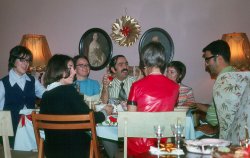
- West Genesee: 1900
- ... on a Sunday afternoon.
Elms Back in the days of elm trees too.
Ogive The workhorse arch of Gothic architecture.
Syracuse ... Posted by Dave - 06/22/2017 - 9:46am -
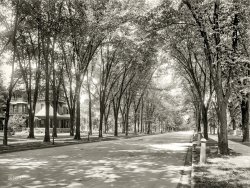
- A Room With a View: 1942
- ... fleets
All up and down among the sheets;
Or brought my trees and houses out,
And planted cities all about.
I was the giant great ... Posted by Dave - 07/16/2014 - 10:49am -
![A Room With a View: 1942 November 1942. "Babies' Hospital, New York. The welfare of this young patient, suffering from burns, is aided by having his bed placed near a window where he can watch the boats pass by. Nurses learn the importance of ministering the comforts of their patients in promoting recovery." Photo by Fritz Henle for the Office of War Information. View full size.
The Land of CounterpaneThe Land of Counterpane
When I was sick and lay a-bed,
I had two pillows at my head,
And all my toys beside me lay,
To keep me happy all the day.
And sometimes for an hour or so
I watched my leaden soldiers go,
With different uniforms and drills,
Among the bed-clothes, through the hills;
And sometimes sent my ships in fleets
All up and down among the sheets;
Or brought my trees and houses out,
And planted cities all about.
I was the giant great and still
That sits upon the pillow-hill,
And sees before him, dale and plain,
The pleasant land of counterpane.
- Robert Louis Stevenson
Milk sips, Greek shipI wonder what a ship of Occupied Greece was doing in New York.
[It's an American vessel. - Dave]
View To The BridgeI've been trying to figure out where this picture was taken. The view from the window reminds me of a visit I once made to The Hospital for Special Surgery on East 70th Street, however that wasn't built until 1955. It could have been a predecessor or might have been the hospital on the then Welfare (now Roosevelt) Island, which is in the East River between Manhattan and Queens.. I am beginning to believe it was Welfare Island. It is absolutely in The East River. The bridge in the background is the Triborough (now RFK) Bridge. The large building adjacent o the bridge, I believe is a city run psychiatric center on Randall's/Ward's Island near the Hells Gate Bridge. Roosevelt Island is east of East 70th street and its northern extension ends at about 85th Street.
That bridge -seems to me to be the 59th Street/Queensborough Bridge, rather than the Triboro/RFK Bridge. The Triboro is somewhat further north of Roosevelt Island, and unlike the Queensborough does not cross the island. It does, however, cross Ward Island/Randall's Island. The structure of the Queensborough is sort of a gothic truss, while the Triboro is a more graceful Art Deco suspension bridge.
Remembrance of things yet to come ...Reminds me definitively of my extended stay at the US Navy Hospital in Portsmouth, Virginia in December, 1976 for knee surgery. I was a new military dependent, having married a US Air Force Airman the previous July. I had a knee injury requiring surgery, and the hospital at the Air Force Base did not have enough facilities at the time to treat dependents. So I was sent to the Navy Hospital across the river, which being the oldest US Navy Hospital in existence, was/is quite up to the task. Oddly enough, I was treated by an Air Force Surgeon!
I was admitted to the Orthopedic Unit, which happened to be on the topmost floor of the facility, I'm thinking at least 12 stories, in the old building which has since been replaced by brand new facilities recently. I was fortunate enough to get the window side bed, overlooking the river where all the ships could be seen entering or leaving the harbor. At night, the view with all the lights was magnificent, and the TWELVE nights I spent there treated me to some views I will never forget.
(The Gallery, Boats & Bridges, Fritz Henle, Kids, Medicine, NYC)](https://www.shorpy.com/files/images/SHORPY_8b08095u.thumbnail.jpg)
- Apple Store: 1920s
- ... pine blister rust, a nasty fungal disease that kills pine trees. If you can plant them where you live, you should, as they are most ... Posted by Dave - 10/24/2013 - 9:38am -
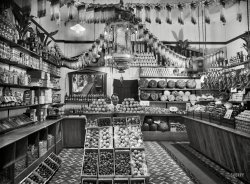
- A Garden Party: 1929
- ... were served from gayly striped marquees set under the trees. And groups of pretty girls wandered about bearing trays of cigarettes ... Posted by Dave - 09/11/2011 - 9:00pm -
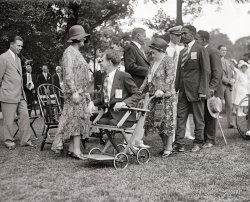
- Our Parents: 1936
- ... sense (due to the proximity of the graves) but the family trees on all of their pages are pretty extensively documented (parents, ... Posted by Dave - 06/09/2019 - 12:09pm -
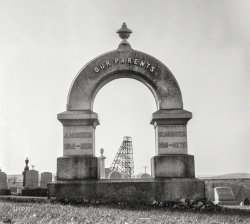
- Earth Day: 1920
- ... tomorrow afternoon at 3 o'clock, when 68 American linden trees will be planted on Twenty-third street between B and E streets, northwest. Each of the trees will be named for a school in the District. The public is invited to the ... Posted by Dave - 09/09/2011 - 7:01pm -
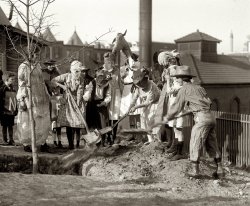
- Dapper Dumper: 1921
- ... the 1932 photo below, St. Ignatius is at the left with the trees of the Panhandle running across the bottom.
Street View It took ... on Google's Street View to get a clear shot through the trees, but here's roughly the same view on Oak Street near Cole Street today. ... Posted by Dave - 10/14/2014 - 9:31am -
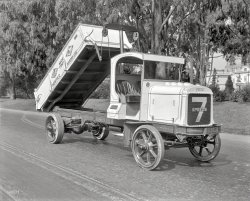
- Neoclassical Gas: 1919
- ... to reduce costs) and its bareness is now screened by trees; the central doors now have minimal moldings framing them. The original ... Posted by Dave - 02/09/2017 - 12:14pm -
![Neoclassical Gas: 1919 San Francisco, 1919. "Hudson Biddle & Smart touring limousine at Palace of Fine Arts." Home, Fido! 5x7 glass negative by Christopher Helin. View full size.
Not exactlyThe 1960s reconstruction of the Palace is MOSTLY an exact replica of the 1915 version. The wall of the Palace itself facing the colonnade was originally fully decorated with freestanding and engaged columns identical to those of the colonnade, and the central doors facing the entrance to the rotunda were elaborately framed. This wall was rebuilt smooth, dull and blank (presumably to reduce costs) and its bareness is now screened by trees; the central doors now have minimal moldings framing them. The original concept as executed made the crescent walk behind the colonnade a much richer, more enclosing, visual experience than it is today. A bit of the pergola which crowned the original wall is visible in this photo.
Theft insurance.Love the chain and padlock on the spare tire.
During the big warThe lad on the right has a navy pea coat with chief petty officer rating. Some kids even had a full uniform to wear. Last war that happened.
[He must be standing behind the car. -tterrace]
ReduxThat's the original Palace of Fine Arts Rotunda, built of wood and "staff" (a mixture of plaster and straw) for the Panama-Pacific International Exposition of 1915. Beloved by San Franciscans, it was the only structure retained afterward. The building deteriorated so badly over the next 50 years that it had to be demolished in the fall of 1964. An exact replica was built in its place from permanent materials and was completed two years later.
Early SUVwith integral roof rails and requisite pooch.
FashionistaShe can also be seen here.
Hudson Sold ValueWhen this car was new autos often had mechanical troubles that made them difficult to drive. Hudson was a medium priced car that was both powerful & reliable for its time.
The Super Sixes as shown in this picture were the first production car to feature a counterbalanced crankshaft allowing higher engine speeds, more power & longer life than was typical at the time.
Another feature was a cork clutch which ran in oil that was smooth, long lasting and did not slip. Other types of clutches often jerked, burnt out or slipped. Every Hudson except the first & last years of production was equipped with a cork clutch.
With these mechanical advantages and a moderate price, Hudson sold a lot of Super Sixes and some were fitted with elite bodies such as those by Biddle & Smart.
(The Gallery, Cars, Trucks, Buses, Chris Helin, Dogs)](https://www.shorpy.com/files/images/SHORPY-1086.thumbnail.jpg)
- Fort Burnham: 1864
- ...
Ft. Johnson To the immediate left of the pine trees is a small hill that is the Confederate Ft. Johnson. 3/4 of a mile away. ... Posted by Dave - 09/04/2009 - 3:28am -
![Fort Burnham: 1864 1864. "Fort Burnham, Virginia, formerly Confederate Fort Harrison, near James River. Encampment and earthworks." Wet plate glass negative. View full size.
The flue over the nestThis soldier writes home about the fireplace in the tent.
http://www.espdesigns.com/letters/1862/Letter7_3_24_62.htm
What about the barrelCan anyone enlighten me as to what's going on with the barrel that looks to be mudded to the top of a chimney in the far left background?
[It's part of the chimney. - Dave]
Ft. Johnson To the immediate left of the pine trees is a small hill that is the Confederate Ft. Johnson. 3/4 of a mile away.
(The Gallery, Civil War)](https://www.shorpy.com/files/images/01824a.thumbnail.jpg)
- Tank: 1942
- ...
Rochester for sure! The big building behind the trees is the old Naval Armory, which now houses the Geva Theatre. Great ... Posted by Tony W. - 09/17/2011 - 8:11pm -
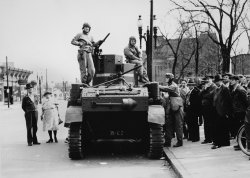
- Red Delicious: 1925
- ... look like gray wigs. There's also a GW legend about apple trees - not as famous as the cherry tree one, but still.
Another shot from ... Posted by Dave - 07/05/2012 - 5:35pm -
